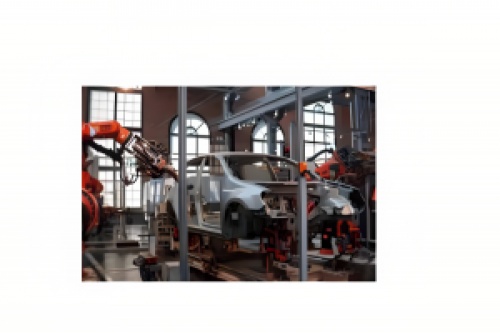The
process of welding can be difficult and time-consuming for factories.
To reach the desired result, you have to go for precision and accuracy.
Industrial welding involves the production of a wide variety of items,
and the procedure can be complicated if you are manufacturing high-end
products that form the construction unit of an end product. This is
where robotic welding programming
comes into play; it can assist in streamlining the process and
contributing to increased efficiency. The use of waypoint plotting and
pre-designed templates is one method for accomplishing this goal.
What does it mean by "Waypoint Plotting" and "Pre-Designed Templates"?
The programming of a robot to navigate between predetermined locations
in space can be accomplished using a technique known as waypoint
plotting. Using waypoints, the robot can navigate along a predetermined
course and arrive at the destination chosen by the user.
The
robot can follow a set of custom-made paths that have been pre-designed
as templates. These templates can be designed by a software program
tosuit a variety of welding projects due to their adaptable nature. This
automation can have a variety of applications like robot polishing, sandblasting, welding, and more.
What are the benefits of this programming in welding?
Streamlining the automation of welding processes through the use of
waypoint charting and pre-designed templates provides several benefits,
including the following:
Saves Time
The
programmer saves time by making use of pre-designed templates, rather
than having to start the path creation process from scratch. Because of
this, the time spent programming is cut down from weeks to mere minutes.
Helps Achieve More Accuracy
The mapping of waypoints enables exact control over the movements of
the robot, which ultimately results in accurate welds. The use of
pre-designed templates helps to ensure that the robot travels in a
regular manner, which in turn reduces the likelihood of errors
occurring.
Helps to Lower Expenses
Automation has the potential to cut costs connected with welding by
reducing the amount of time spent programming and enhancing accuracy.
The same robot can be used for several welding operations, so there is
less of a need for extra equipment.
Improves safety
The process of welding can be automated, which can help to reduce the
risk of injury to personnel. Robot automation processes like robot spraying can prevent workers from coming into direct contact with the site.
To know more, visit https://www.augmentus.tech/
Original Source: https://bit.ly/43nAWbl












 Boost your website conversion rate with UX Design
Boost your website conversion rate with UX Design



